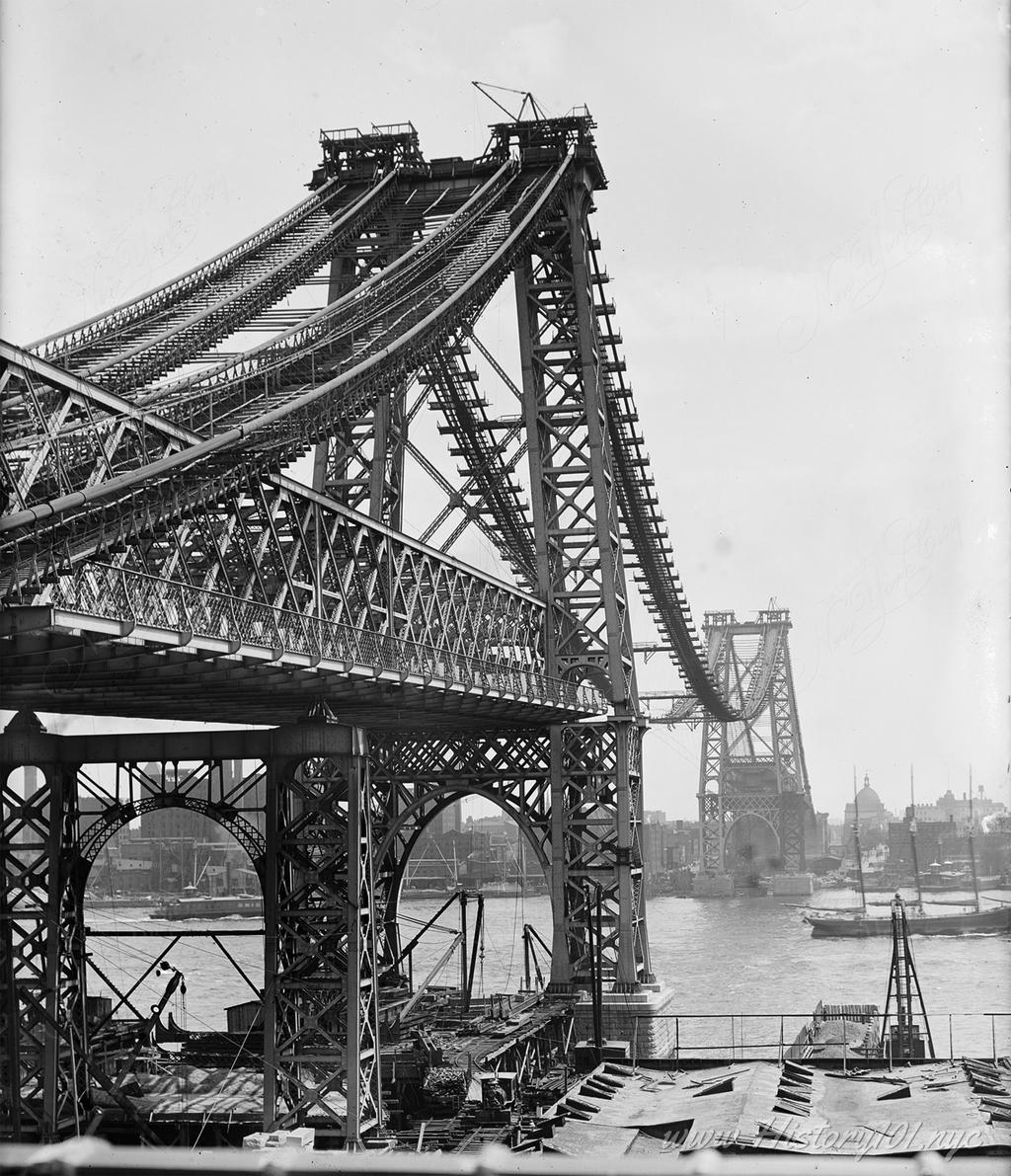Stretching across the majestic East River, the Williamsburg Bridge stands as a testament to human ingenuity and the power of engineering. As one of the iconic bridges of New York City, it serves as a vital link connecting the boroughs of Manhattan and Brooklyn. In this blog post, we will delve into the captivating history of the Williamsburg Bridge, exploring its conception, construction challenges, and the profound impact it has had on the communities it connects.
Conception and Design:
In the late 19th century, as Brooklyn experienced rapid population growth, there arose a need for additional river crossings to connect the borough to Manhattan. In 1895, a design competition was held for a bridge to be built between the Lower East Side of Manhattan and Williamsburg in Brooklyn. The winning design, submitted by engineer Leffert L. Buck and architect Henry Hornbostel, featured innovative steel truss structures and distinctive ornamental towers.
Construction Challenges:
The construction of the Williamsburg Bridge presented formidable challenges. Its location between densely populated areas posed logistical difficulties, and the presence of underground subway tunnels and a ferry slip added to the complexity. Additionally, the bridge had to be constructed with minimal disruption to the existing streetcar and pedestrian traffic.
Opening and Significance:
After six years of construction, the Williamsburg Bridge was opened to the public on December 19, 1903. Its completion was a monumental achievement, as it became the longest suspension bridge in the world at the time, with a span of 1,600 feet. The bridge not only provided a vital transportation link but also became a symbol of progress and unity, fostering economic growth and cultural exchange between the two boroughs.
Architectural Features and Design:
The Williamsburg Bridge stands out for its architectural grandeur. Its towers, adorned with ornamental details, rise above the river, offering a commanding presence. The lattice steel truss structure, which supports the roadway, is an engineering marvel, combining strength and elegance. The bridge's design has influenced subsequent bridge construction and has become an iconic representation of New York City's skyline.
Role in Community Development:
The Williamsburg Bridge played a significant role in shaping the development and character of the surrounding neighborhoods. It facilitated the growth of Williamsburg, transforming it from a primarily industrial area into a vibrant residential community. The bridge allowed for easier commuting, attracting new residents and businesses to the neighborhood and contributing to its cultural diversity.
Evolution and Restoration:
Over the years, the Williamsburg Bridge has undergone various restorations and modifications to meet the demands of modern transportation. Upgrades have included the addition of subway tracks and pedestrian and cycling paths. These enhancements have made the bridge more accessible and accommodating to the changing needs of the communities it serves.
Enduring Legacy:
Today, the Williamsburg Bridge continues to be a vital transportation artery, carrying vehicular, subway, and pedestrian traffic between Manhattan and Brooklyn. It has become an integral part of the city's infrastructure and a symbol of connectivity and resilience. The bridge's panoramic views of the cityscape and its role in fostering community connections make it a beloved landmark for locals and visitors alike.
The Williamsburg Bridge stands as a testament to the vision, engineering prowess, and the indomitable spirit of New York City. Its rich history and architectural splendor have made it an enduring symbol of connectivity, community, and progress. As the bridge continues to span the East River, it serves as a vital link between Manhattan and Brooklyn, connecting people, cultures, and aspirations, and embodying the essence of the diverse and vibrant city it calls home.
